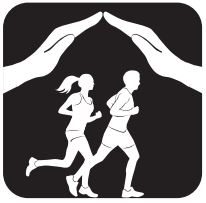In my experience, there are 3 broad types of runners (at the risk of reductionism, 3 encapsulate a wide majority of runners).
Type 1 “Beginner” has less than 1 year of running experience, tally a weekly mileage from 5-20 km and runs a 5K and 10K in more than 30 minutes & 60 minutes respectively. The main motivation for these runners is to improve general health but most of all, having fun and weight management.
Many are goal oriented but maybe less process oriented. A runner once told me that she wanted to inspire the other females among her friends and family through her running. That’s a big 10,000 foot vision and she was happy to keep looking at that pie without worrying about the hows.
Once a Beginner “levels up” (although that process is iterative and may or may not take much time), they become a Type 2 “Recreational”. With more than 1 year of running experience, they find they can run on a diet of 20-50 km a week. In terms of race timings, a 5K time of 21-30 minutes and 10K times 44-58 minutes are common. Like Type 1s, they enjoy the freedom to get away and run which becomes in of itself a way of stress management.
Having found the body is capable, Type 2s then like to take on a new obstacle every year, something they think they can reach. 5Ks through to the marathon may constitute these goals. Of course there is a small desire of performance improvement but more often I have heard the words “I would like to finish” than someone saying “I want to finish a marathon in under 5 hours“.
Most runners spend a big chunk of their lives as Type 2s. A few either advance to Type 3 “Caliber” or are inherently Type 3s due to genetic predispositions. Caliber runners run upwards of 40-50 km a week and distinguished by a 5K time of 15-20 minutes. Regional class athletes in the UAE post 5K times in the 15-18 minute bracket with a corresponding age grade of >70-72%.
Caliber runners can be high or low caliber runners, depending on the mix of qualities like mental fortitude, drive, procrastination and personality they have to advance their running year-on-year. Many struggle with a host of injuries from a long history of training and competition related stresses.
One of the main motivations for Type 3s are to stay injury free and improve performance, less so of weight management as most of them are already somewhat optimized for their distances. The idea of “fun” involves going through strenuous, demanding workouts to express themselves in competition. The Type 3 enjoys the process or “means” to achieving a larger goal but many are happy to leave fine details to a coach.
Expression in competition may simply be “self-preservation“, or to prove to oneself “okay I’m still doing well at this level“. Some ladies at House of Runners were aware they were quite good in their age group and were driven to train and race in order to preserve that age group placing in those events.
The progression from Type 1 to Type 2 is much more common than is the entry to Type 3 and a few are well gifted to move from Type 2 to Type 3 by year-on-year advances in strength, skill and stamina. Advances within Type 1 in terms of percentage improvements for a given training load are often double digits (10-30%). Advances within Type 2 are less so (3-10%); they are often miniscule within Type 1s (1-3%).
Bear in mind that a 22 minute 5K runner in their 50’s might be pretty darn good regionally for that age, so it is the gender and age specific strength, skill and stamina that factor into this discussion. Therefore, everything that is written above about 5K and 10K timings are for a general population of runners but those timings must be age graded at a finer level.
Life long runners continue to train and race well into their 50’s and 60’s as I have witnessed, so the age factor is even less of a concern once a certain level of confidence is established. For many of these mature “seasoned” runners, the addiction to running refuses to extinguish. Running is solidified as part of a lifestyle, just like eating, prayer or meditation without which a day is rarely straight.
Finally it must be stated that when the allure of running has lost its sheen, and when the costs and obstacles involved are far greater than the benefits obtained, runners “retire” and “move on”. Some go on to other sports (like cycling), some leave it completely and never want to look back at it and some just get busy with other aspects of life and simply can’t make the time for misplaced goals.
Among the first two categories of people who “retire”, there are those who find out sooner or later that their bodies are not suited for the demands of running. Although one might think all humans are made to do running (or as Kipchoge says “No human is limited”), the customer is probably not wrong here.
Only an individual is acutely aware that they have some physical or mental impediments that stop them from advancing in their running and that the costs of overcoming ar disproportionately greater. It is only a sign of intelligence that they have recognized early they are ill-adapted and try something else instead.
To make matters very plain, running is there for everyone to taste. Those who like the taste will remain in the sport for a long time. It is addictive and self-fulfilling, a means of expressing oneself just like painting or public speaking is. Doubters and nay-sayers among non-runners will not understand the countless reasons for a runner’s motivations to run, so it is a pointless discussion trying to convince them. They must taste the water themselves.
–Ronnie
